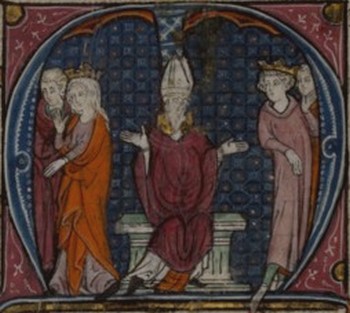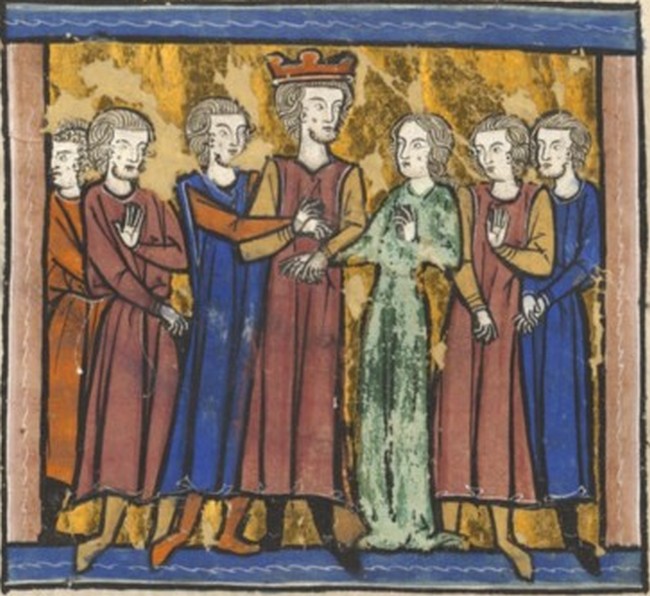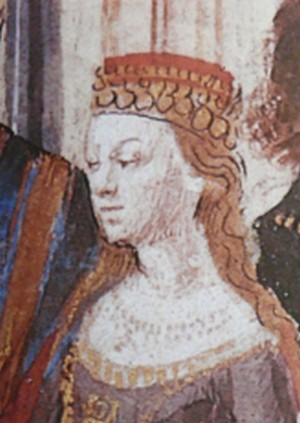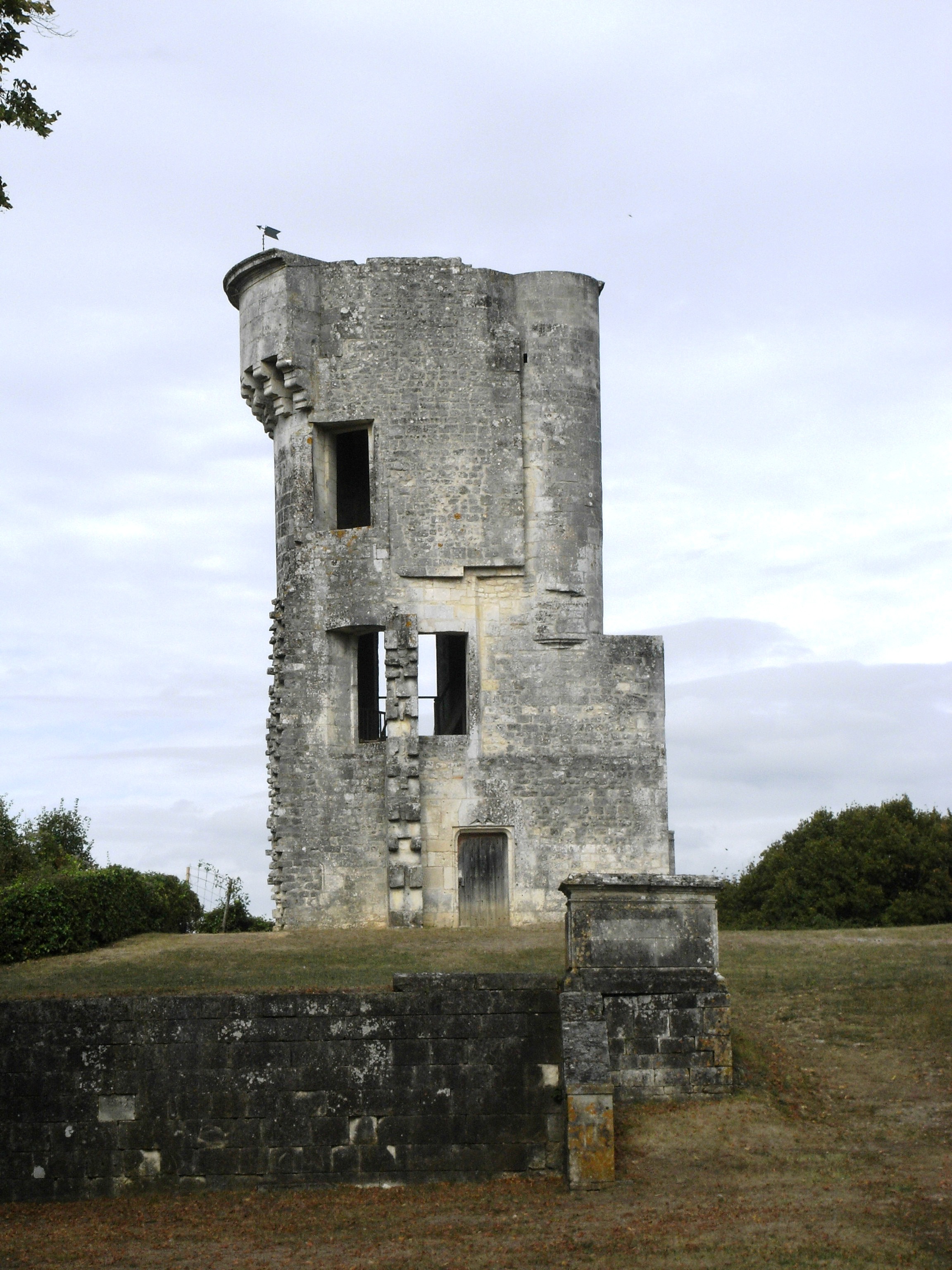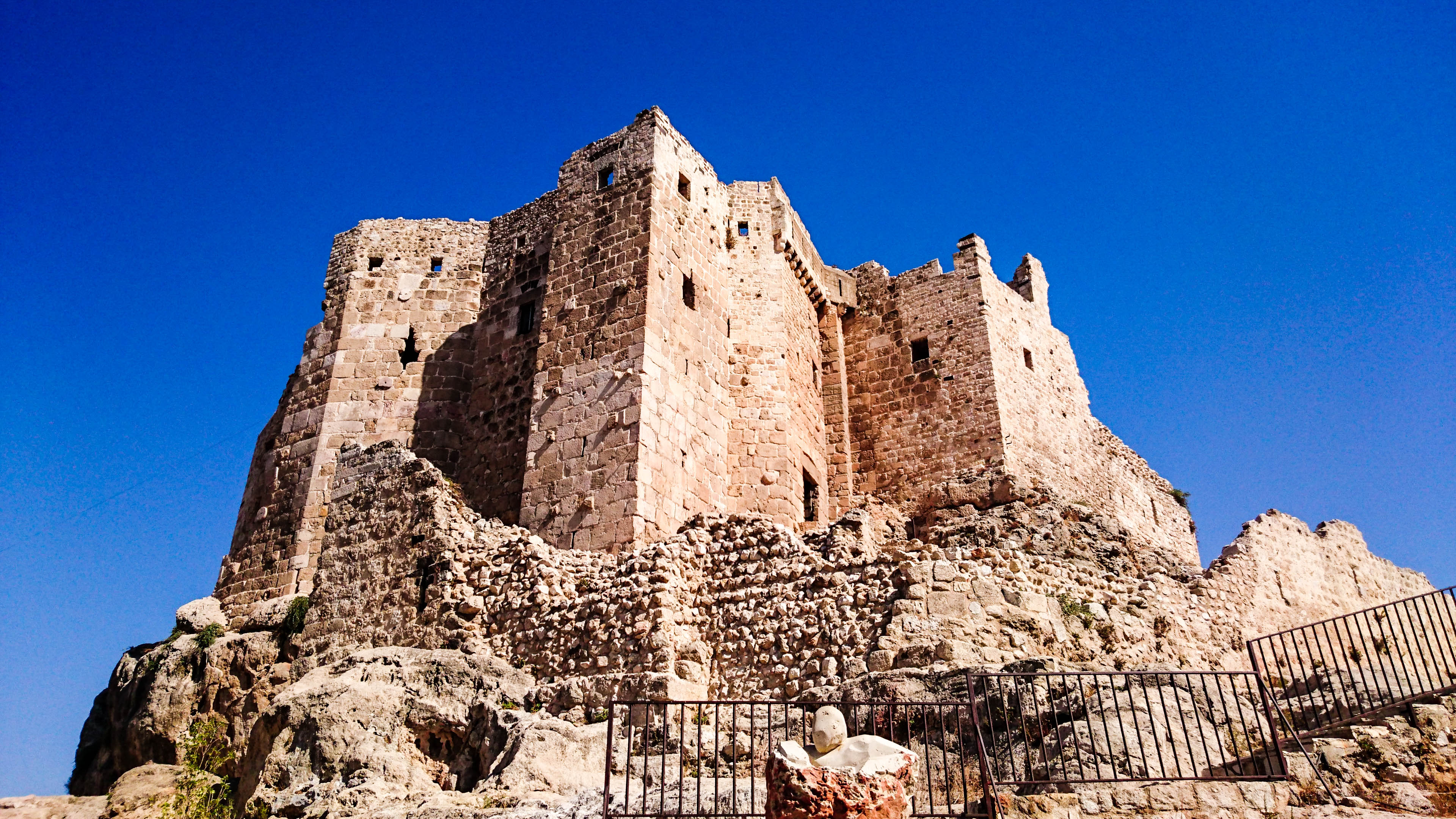|
Third Crusade
The Third Crusade (1189–1192) was an attempt led by King Philip II of France, King Richard I of England and Emperor Frederick Barbarossa to reconquer the Holy Land following the capture of Jerusalem by the Ayyubid sultan Saladin in 1187. For this reason, the Third Crusade is also known as the Kings' Crusade. It was partially successful, recapturing the important cities of Acre and Jaffa, and reversing most of Saladin's conquests, but it failed to recapture Jerusalem, which was the major aim of the Crusade and its religious focus. After the failure of the Second Crusade of 1147–1149, the Zengid dynasty controlled a unified Syria and engaged in a conflict with the Fatimid rulers of Egypt. Saladin ultimately brought both the Egyptian and Syrian forces under his own control, and employed them to reduce the Crusader states and to recapture Jerusalem in 1187. Spurred by religious zeal, King Henry II of England and King Philip II of France (later known as "Philip Augustus") e ... [...More Info...] [...Related Items...] OR: [Wikipedia] [Google] [Baidu] |
Crusades
The Crusades were a series of religious wars initiated, supported, and at times directed by the Papacy during the Middle Ages. The most prominent of these were the campaigns to the Holy Land aimed at reclaiming Jerusalem and its surrounding territories from Muslim rule. Beginning with the First Crusade, which culminated in the Siege of Jerusalem (1099), capture of Jerusalem in 1099, these expeditions spanned centuries and became a central aspect of European political, religious, and military history. In 1095, after a Byzantine request for aid,Helen J. Nicholson, ''The Crusades'', (Greenwood Publishing, 2004), 6. Pope Urban II proclaimed the first expedition at the Council of Clermont. He encouraged military support for List of Byzantine emperors, Byzantine emperor Alexios I Komnenos, AlexiosI Komnenos and called for an armed pilgrimage to Jerusalem. Across all social strata in Western Europe, there was an enthusiastic response. Participants came from all over Europe and had a ... [...More Info...] [...Related Items...] OR: [Wikipedia] [Google] [Baidu] |
Teutonic Order
The Teutonic Order is a religious order (Catholic), Catholic religious institution founded as a military order (religious society), military society in Acre, Israel, Acre, Kingdom of Jerusalem. The Order of Brothers of the German House of Saint Mary in Jerusalem was formed to aid Christians on their pilgrimages to the Holy Land and to establish hospitals. Its members have commonly been known as the Teutonic Knights, having historically served as a crusades, crusading military order for supporting Catholic rule in the Holy Land and the Northern Crusades during the Middle Ages, as well as supplying military protection for Catholics in Eastern Europe. Purely religious since 1810, the Teutonic Order still confers limited honorary knighthoods. The Bailiwick of Utrecht of the Teutonic Order, a Protestant order of chivalry, chivalric order, is descended from the same medieval military order and also continues to award knighthoods and perform charitable work. Name The name of the Or ... [...More Info...] [...Related Items...] OR: [Wikipedia] [Google] [Baidu] |
Conrad Of Montferrat
Conrad of Montferrat (Italian language, Italian: ''Corrado del Monferrato''; Piedmontese language, Piedmontese: ''Conrà ëd Monfrà'') (c. 1146 – 28 April 1192) was a nobleman, one of the major participants in the Third Crusade. He was the ''de facto'' Kings of Jerusalem, King of Jerusalem (as Conrad I) by virtue of his marriage to Isabella I of Jerusalem from 24 November 1190, but officially elected only in 1192, days before his death. He was also the eighth List of rulers of Montferrat, Marquess of Montferrat from 1191. Early life Conrad was the second son of Marquess William V of Montferrat, "the Elder", and his wife Judith of Babenberg. He was a first cousin of Frederick I, Holy Roman Emperor, Frederick Barbarossa, Holy Roman Emperor, as well as Louis VII of France and Leopold V of Austria (Babenberg), Leopold V of Austria. Conrad was born in Montferrat, which is now a region of Piedmont, in northwest Italy; during the era in which he was born, it was a March of Montferra ... [...More Info...] [...Related Items...] OR: [Wikipedia] [Google] [Baidu] |
Sibylla Of Jerusalem
Sibylla (; – 25 July 1190) was the queen of Jerusalem from 1186 to 1190. She reigned alongside her husband Guy of Lusignan, to whom she was unwaveringly attached despite his unpopularity among the barons of the Kingdom of Jerusalem. Sibylla was the eldest daughter of King Amalric and the only daughter of his first wife, Agnes of Courtenay. Her father died in 1174, making her heir presumptive to her younger brother, King Baldwin IV; when it became clear that the 13-year-old king had contracted leprosy, the matter of Sibylla's marriage became urgent. The regent, Count Raymond III of Tripoli, arranged for her to marry William Longsword of Montferrat in late 1176, but within a year, William died, leaving her pregnant and in possession of the County of Jaffa and Ascalon. Shortly after giving birth to a son, King Baldwin V, Baldwin, Sibylla came to be associated with her brother in public acts, thereby being designated as next in line to the throne. Sibylla's second marriage to Guy ... [...More Info...] [...Related Items...] OR: [Wikipedia] [Google] [Baidu] |
Guy Of Lusignan
Guy of Lusignan ( 1150 – 18 July 1194) was King of Jerusalem, first as husband and co-ruler of Queen Sibylla from 1186 to 1190 then as disputed ruler from 1190 to 1192. He was also Lord of Cyprus from 1192 to 1194. A French Poitevin knight, Guy was the youngest son of Hugh VIII of Lusignan and the younger brother of Aimery of Lusignan. Having arrived in the Holy Land (where his brother Aimery was already prominent) at an unknown date, Guy was hastily married to Sibylla in 1180 to prevent a political incident within the kingdom. As the health of his brother-in-law Baldwin IV of Jerusalem deteriorated, Sibylla appointed Guy as regent for his stepson, Baldwin V. Baldwin IV died in 1185, followed shortly by Baldwin V in 1186, leading to the succession of Sibylla and Guy to the throne. Guy's reign was marked by increased hostilities with the Ayyubids ruled by Saladin, culminating in the Battle of Hattin in July 1187—during which Guy was captured—and the fall of Jerusa ... [...More Info...] [...Related Items...] OR: [Wikipedia] [Google] [Baidu] |
Géza, Son Of Géza II Of Hungary
Géza ( 1151 – after 1191) was a Hungarian royal prince and the youngest son of King Géza II of Hungary. He was the younger brother of Stephen III and Béla III of Hungary. Géza was a pretender to the Hungarian throne against Béla III, but he was imprisoned from 1177 to 1189. He traveled to the Holy Land during the Third Crusade with an army of 2,000 Hungarian warriors. Background Prince Géza was born in the early 1150s, the third son of King Géza II of Hungary and his wife, Princess Euphrosyne of Kiev. In near-contemporary German chronicles – for instance, Alberic of Trois-Fontaines – he was also referred to as "Guithardus" or "Gotthard". After his father King Géza II died in 1162, there were several conflicts over the royal succession. Géza's eldest brother was crowned Stephen III of Hungary, but two of their father's brothers briefly seized the throne, reigning as Ladislaus II and Stephen IV of Hungary. Stephen III defeated his uncle in battle in 1163, ... [...More Info...] [...Related Items...] OR: [Wikipedia] [Google] [Baidu] |
Frederick Barbarossa
Frederick Barbarossa (December 1122 – 10 June 1190), also known as Frederick I (; ), was the Holy Roman Emperor from 1155 until his death in 1190. He was elected King of Germany in Frankfurt on 4 March 1152 and crowned in Aachen on 9 March 1152. He was crowned King of Italy on 24 April 1155 in Pavia and emperor by Pope Adrian IV on 18 June 1155 in Rome. Two years later, the term ' ("holy") first appeared in a document in connection with his empire. He was later formally crowned King of Burgundy, at Arles on 30 June 1178. His nickname of ' (meaning "Red Beard" in Italian) "was first used by the Florentines only in 1298 to differentiate the emperor from his grandson, Frederick II ... and was never employed in medieval Germany" (the colour red was "also associated in the Middle Ages with malice and a hot temper"; in reality, Frederick's hair was "blond", although his beard was described by a contemporary as "reddish"). In German, he was known as ', which in English means " ... [...More Info...] [...Related Items...] OR: [Wikipedia] [Google] [Baidu] |
Philip II Of France
Philip II (21 August 1165 – 14 July 1223), also known as Philip Augustus (), was King of France from 1180 to 1223. His predecessors had been known as kings of the Franks (Latin: ''rex Francorum''), but from 1190 onward, Philip became the first French monarch to style himself "King of France" (''rex Francie''). The son of King Louis VII and his third wife, Adela of Champagne, he was originally nicknamed () because he was a first son and born late in his father's life. Philip was given the epithet "Augustus" by the chronicler Rigord for having extended the crown lands of France so remarkably. After decades of conflicts with the House of Plantagenet, Philip succeeded in putting an end to the Angevin Empire by defeating a coalition of his rivals at the Battle of Bouvines in 1214. This victory would have a lasting impact on western European politics: the authority of the French king became unchallenged, while John, King of England, was forced by his barons to assent to Magna C ... [...More Info...] [...Related Items...] OR: [Wikipedia] [Google] [Baidu] |
Richard I Of England
Richard I (8 September 1157 – 6 April 1199), known as Richard the Lionheart or Richard Cœur de Lion () because of his reputation as a great military leader and warrior, was King of England from 1189 until his death in 1199. He also ruled as Duke of Normandy, Duke of Aquitaine, Aquitaine, and Duchy of Gascony, Gascony; Lord of Cyprus in the Middle Ages, Cyprus; Count of Poitiers, Counts and dukes of Anjou, Anjou, Count of Maine, Maine, and Count of Nantes, Nantes; and was overlord of Brittany at various times during the same period. He was the third of five sons of Henry II of England and Eleanor of Aquitaine and was therefore not expected to become king, but his two elder brothers predeceased their father. By the age of 16, Richard had taken command of his own army, putting down rebellions in Poitou against his father. Richard was an important Christian commander during the Third Crusade, leading the campaign after the departure of Philip II of France and achieving sev ... [...More Info...] [...Related Items...] OR: [Wikipedia] [Google] [Baidu] |
Cyprus (theme)
__NOTOC__ Cyprus (, ''Kýpros'') or the Theme of Cyprus (, ''théma Kýprou'') was a Byzantine province located in the island of Cyprus, established in 965 after the reconquest of Cyprus by the Byzantine navy. Prior to this the island had been a Byzantine-Arab condominium for three centuries, except occasional short periods where it was occupied by either power. Important cities on the island at this time included Nicosia, Limassol, and Famagusta. History Rebellions by the thematic governors, Theophilos Erotikos in 1042 and Rhapsomates in 1091, failed, quickly subdued by imperial forces. The island was spared the destruction of the loss of Anatolia and remained peaceful and relatively prosperous during turn of the 12th century. During the Siege of Antioch, a battle of the First Crusade, the Crusader army received supplies from Byzantine-controlled Cyprus. In the spring of 1156, the island was attacked by Raynald of Châtillon and Thoros II, Prince of Armenia. The island was th ... [...More Info...] [...Related Items...] OR: [Wikipedia] [Google] [Baidu] |
Byzantine Empire
The Byzantine Empire, also known as the Eastern Roman Empire, was the continuation of the Roman Empire centred on Constantinople during late antiquity and the Middle Ages. Having survived History of the Roman Empire, the events that caused the fall of the Western Roman Empire in the 5th centuryAD, it endured until the fall of Constantinople to the Ottoman Empire in 1453. The term 'Byzantine Empire' was coined only after its demise; its citizens used the term 'Roman Empire' and called themselves 'Romans'. During the early centuries of the Roman Empire, the western provinces were Romanization (cultural), Latinised, but the eastern parts kept their Hellenistic culture. Constantine the Great, Constantine I () legalised Christianity and moved the capital to Constantinople. Theodosius I, Theodosius I () made Christianity the state religion and Greek gradually replaced Latin for official use. The empire adopted a defensive strategy and, throughout its remaining history, expe ... [...More Info...] [...Related Items...] OR: [Wikipedia] [Google] [Baidu] |
Order Of Assassins
The Order of Assassins (; ) were a Nizari Isma'ilism, Nizari Isma'ili order that existed between 1090 and 1275 AD, founded by Hasan-i Sabbah, Hasan al-Sabbah. During that time, they lived in the mountains of Persia and the Levant, and held a strict subterfuge policy throughout the Middle East, posing a substantial strategic threat to Fatimid Caliphate, Fatimid, Abbasid, and Seljuk Empire, Seljuk authority, and killing several Christian leaders. Over the course of nearly 200 years, they killed hundreds who were considered enemies of the Nizari Isma'ili state. The modern term assassination is believed to stem from the tactics used by the Assassins. Contemporaneous historians include ibn al-Qalanisi, Ali ibn al-Athir, and Ata-Malik Juvayni. The former two referred to the Assassins as ''batiniyya'', an epithet widely accepted by Isma'ilis themselves. Overview The Assassins were founded by Hassan-i Sabbah. The state was formed in 1090 after the capture of Alamut Castle in the Albo ... [...More Info...] [...Related Items...] OR: [Wikipedia] [Google] [Baidu] |



